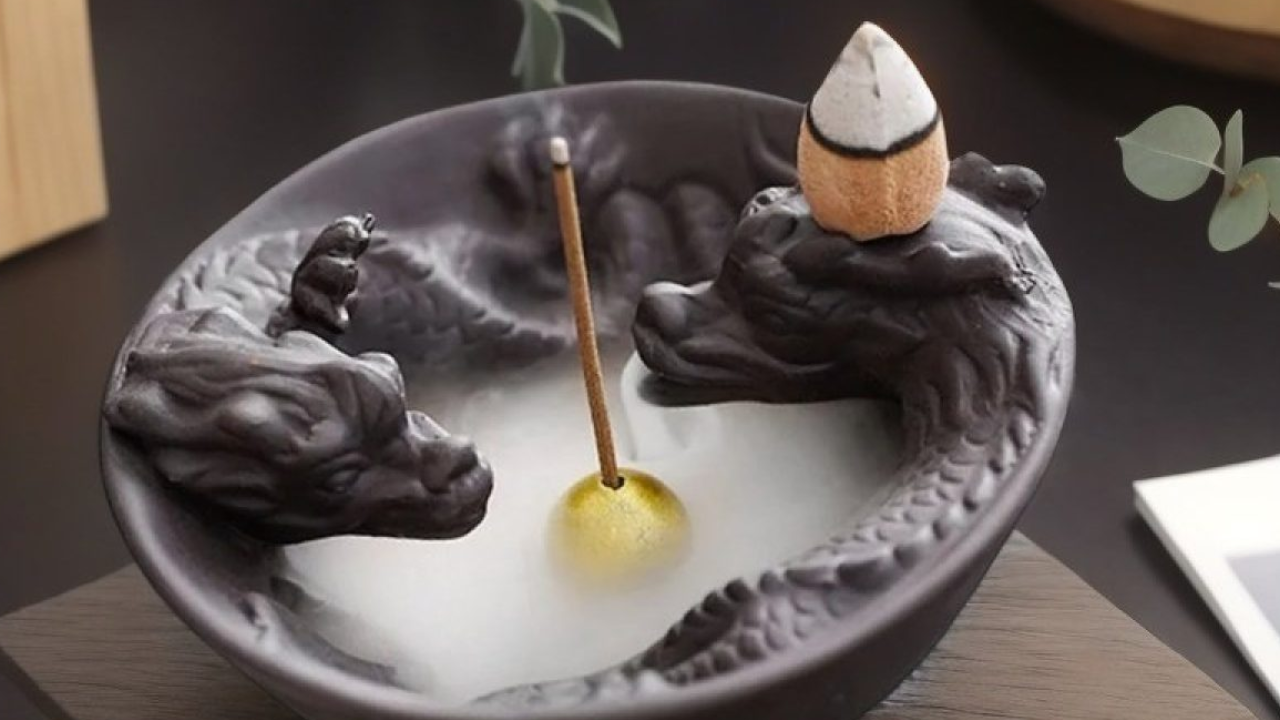From ancient dynasties through to the present day, enamel incense holders have been used for spiritual practice, daily life, and artistic expression at various times. These are ceramic pieces that are fused with symbolism to represent harmony, balance, and that strong bond between humanity and that of the world of nature. Chinese enamel incense holder date to thousands of years ago and were first made during the Han Dynasty, AD 206 – 220. During this period, incense burners were called ‘boshanlu’ (tent burners), which had a mountain pattern indicating the mythical Mount Kunlun, home of immortals. These early incense holders show Chinese people’s respect for nature and transcendence – spiritual and design aspects.
Symbolism in Designs
Chinese ceramic incense holders are very symbolic, and most of the designs mentioned in Chinese ceramic incense holders relate to the themes of harmony, wealth, and spiritual awakening.
Dragons and Phoenixes
In the Chinese incense holder, dragons and phoenixes are common and are the symbol of power, protection, strength, protection and renewal, and harmony. Yin and Yang together represent The balance.
Lotus Flowers
Purity, enlightenment, spiritual growth, Lotus means all these. Incense holders show incense as a tool to gain inner peace; incense is for transformation.
Clouds and Waves
They are motifs of the transient life in the transience. Incense smoke rises, mirroring the smoke of the morning grasses and the ebbing smoke of the evening grasses, acting as natural elements of the earthly and divine.
Bamboo and Plum Blossoms
The plum blossom, in part, symbolizes perseverance and a bit of eventual hope because they bloom first of many plants. These motifs are especially meant to remind users about the virtues they should stick to while facing life’s complexities.
Purpose of Incense Holders
In Chinese culture, burning incense extends far beyond the gesture of the scent as it is something of a spiritual affair, assisting in reaching out to ancestors, given deities, and the cosmos. Ceramic incense holders are the consummate centerpiece in these rituals, placing the practice in beauty and meaning. There is an atmosphere of reverence and severity, and in temples, ceramic holders are made with much ceremony. Yet, when it comes to home, for everyday prayers, meditation, or relaxation, these smaller, more modest holders are used. With the increasingly fast pace in an increasingly fast-paced world, mindfulness becomes more incense placed in a small ceramic holder and watching it fill the room with its smoke. Because they admired these pieces, they made their presence not just in spiritual practice but also as decorative objects. However, they are hung in someone’s home, office, or a certain mediation space, they serve to close the gap between the past and the present—each one full of the timeless values of harmony and beauty.
Conclusion
The enamel incense holders are another example of Chinese porcelain items, in the same way as their similar ceramic fellowships, that bear witness to the rich and moving history and creative legacy of China. It has symbolism beyond what it does the balance of resilience and spiritual connection. Chinese ceramic incense holders have far outlived their meaning of time, sliding back to ancient rituals; they also create modern décor. But they remind us that what can come out of tradition and meaningful design is highly effective and can be appealing.
